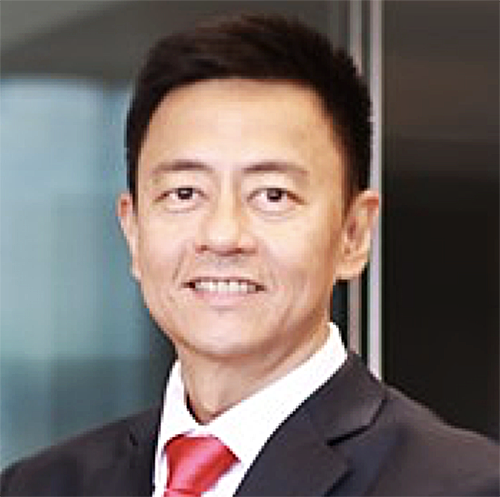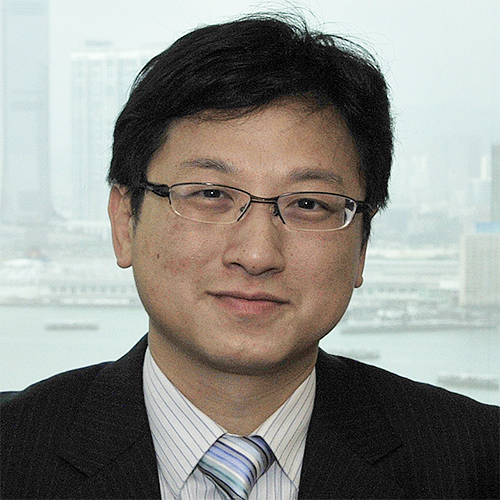SSGA is following a measured and targeted strategy for developing its exchange-traded fund (ETF) business in Asia, particularly in Hong Kong.
Although it has been present in the Hong Kong ETF market since 1999 when it launched the Tracker Fund, way before ETFs became popular in Asia, SSGA still only has four ETF products in this market. In terms of number, this is minuscule when compared to about 120 ETFs listed on the Hong Kong exchange today and to the multitude of ETF products SSGA offers globally.
Perhaps, it is just as well since the Hong Kong market appears to suffer from a proliferation of ETF products that are focused mostly on the China A-share market. Many of these products suffered from lack of investor interest prior to the rally in the A-share market last year.
The advent of the Shanghai-Hong Kong Stock Connect, which provides Hong Kong investors direct access to the A-share market in September 2014 does not help since the original objective of investing in A-share ETFs is to gain access to a market that was previously relatively difficult to access.
By following a measured and targeted approach to its ETF listings, SSGA is ensuring that it only offers products that will be suitable to investor requirements and will do well in the market.
“If you look at the ETF listings on the Hong Kong Exchange and you dig deeper into their daily trading volume, it’s only the top three or four products that are really trading well. For the others, the trading volume are still relatively low. From the clients’ perspective, the liquidity they can access for a particular product is very important. From a product provider perspective, we want to ensure that there is a solid case for launching new funds that would be able to generate significant trading volume and facilitate the client’s use of any particular ETF,” says Ray Chan, vice president and head of ETF business development, Asia ex-Japan for SSGA.
For SSGA, the business development strategy for its ETF business in Asia is to help institutional investors gain access to investment opportunities in both local and cross-border markets.
“If we look at how we try and grow the global business, we look at what the opportunities are in the local markets, who the natural investors are and what products they are interested in. We look at that, and try to understand where the best opportunity is for us to engage our clients on. Opportunities for their portfolios may not be necessarily in products that are listed locally. We have a lot of activities here in the region with institutional investors and high net worth investors who are very comfortable investing in cross-border products, investing in European UCITS or US ETFs,” says James Ross, executive vice president of State Street Global Advisors and global head of the ETF business.
Ross uses a baseball analogy to describe the stage of development for the ETF business in Asia saying: “We are still in the second or third inning of a nine-inning game. After 20-plus years, the industry still has a lot of places where it can continue to grow, innovation will continue to deliver, and we continue to work with clients on how to solve their investment.”
In China, Taiwan and the rest of Asia, SSGA is leveraging on its relationship with its institutional clients to help them channel some of the domestic assets to overseas investments using ETFs as a vehicle.
Chan is hopeful that the Shanghai-Hong Kong Stock Connect will soon include ETFs in the list of products that will allow mainland Chinese institutional investors to invest outb ound or overseas. This is different from foreign investors using ETFs as in-bound investment vehicles to access the A-share market.
“At this stage in the development of the Shanghai-Hong Kong Stock Connect, ETFs are not yet included (in the list of outbound products). But there are indications that in the next stage of the program Hong Kong-listed ETFs may be potentially included. By then, I think there would be even more channels opening up for mainland China institutions and eligible clients to invest overseas through ETFs,” Chan says.
Looking into the evolution of ETFs in the coming years Ross, who’s a pioneer in the ETF industry, says there are five different buckets of ETF products that are expected to evolve. These are:
- Core ETFs, which include traditional and non-traditional products. ETF providers are expected to continue to advance the development of core ETFs;
- Advance beta ETFs, which are considered an important evolution of factor investing and seeking different ways of trying to get precise exposure for a portfolio;
- Liquid alternatives, which still play a future in ETF innovation, although there are not a lot of takers of this type of product at present;
- Outcome orientation ETFs which makes sure that the ETF provider is building portfolio strategies for clients that are really helping them get to their outcome orientation.
“It’s taking a different view on how to try and get to that outcome versus the benchmark, how did you perform versus how you deliver alpha. What we’re finding from the mindset of the investor is that when you outperform 2%, but the market’s down 20%, the investor think it isn’t a great outcome for them since they’re still down 18%,” Ross says.
SSGA is also seeing the evolution of active ETFs although, at present, this product is only used in the US.
“We launched the ETF partnership with a company called Double Line Capital and we’re looking at different ways on how we can deploy active outcomes through the ETF structure which I know historically has been viewed as a passive structure,” Ross says.
SSGA is known for pioneering ETFs by launching the first US ETF in 1993. Since then it has become the second largest global manager of ETFs with US$455.3 billion in US ETF assets and US$481 billion in total global ETF assets as of December 21 2014.
In Asia Pacific, its most popular ETF is the SPDR Gold ETF, which represents 221 global offerings in a variety of asset classes including US equity, international equity, commodities, US fixed income and international fixed income. The SPDR ETF grew by 3.42% in terms of assets under management (AUM) to $15.1 billion as of end February 2015.
ETFs have grown in popularity among Asian investors in recent years with assets in exchange-traded funds or products listed in Asia Pacific (ex-Japan) reaching a record high of $125.3 billion at the end of April, according to ETFGI.
“Despite a relatively short history, ETFs have proven to perform as expected during extreme market condition or uncertainty. In fact, it has been a solution for some problems during or after the crises, especially during the 2008 global financial crisis when liquidity was important,” Ross says.





.jpg)
.jpg)


